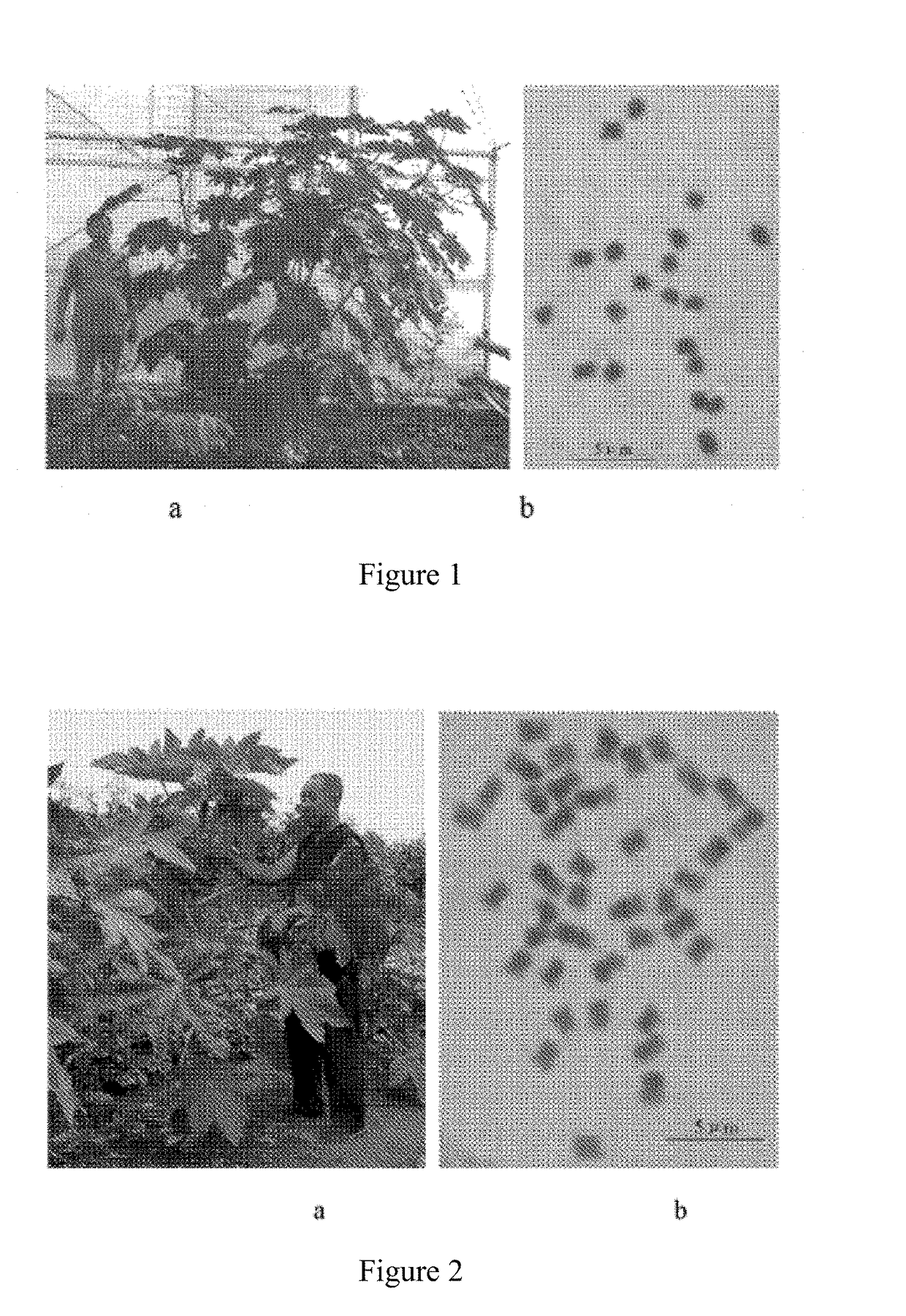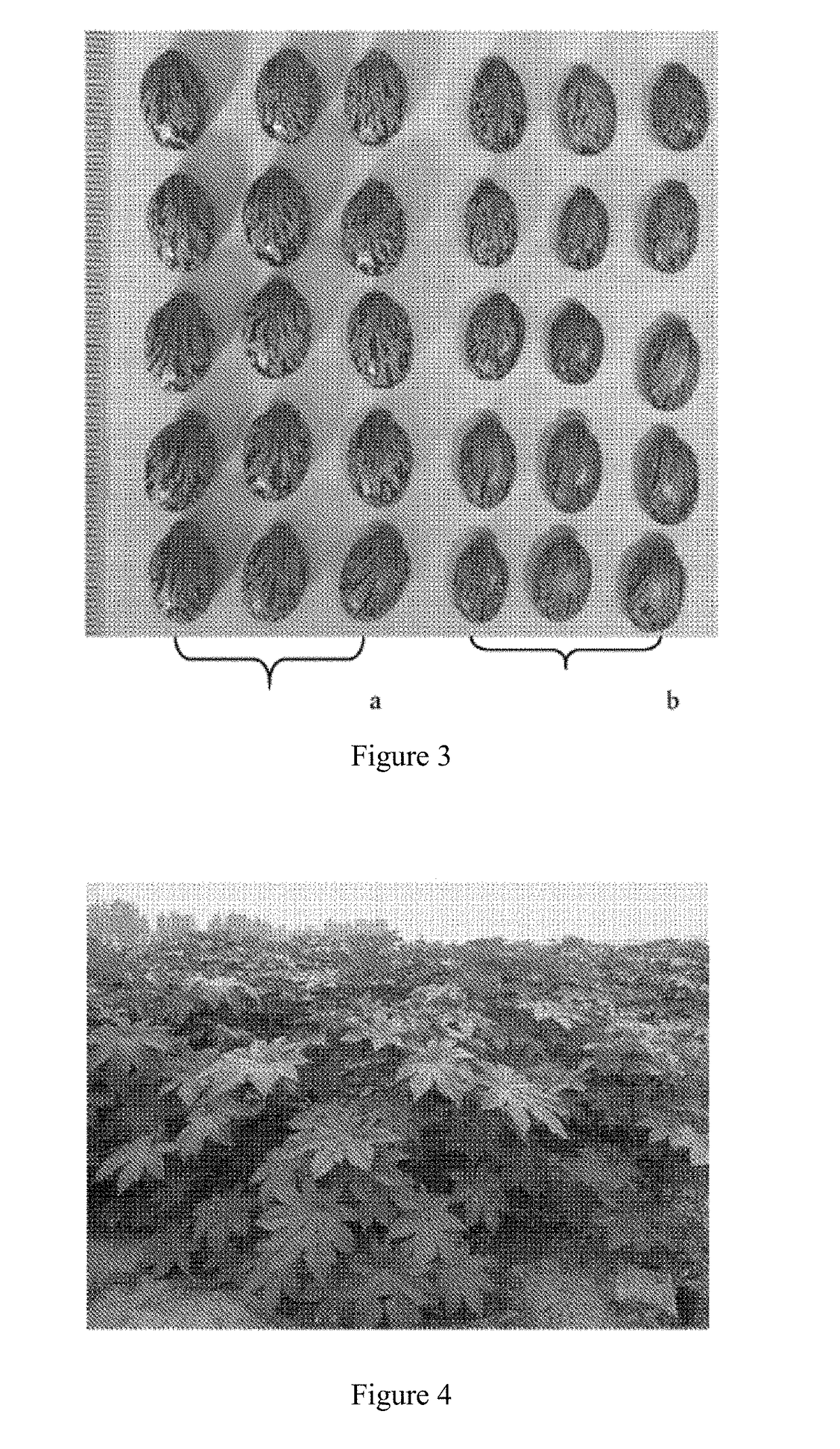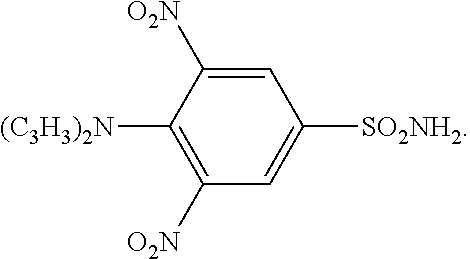Breeding Method for Tetraploid Ricinus Communis
a tetraploid, new technology, applied in the field of breeding methods for new plant varieties, can solve the problems of difficult external absorption of tetraploids, difficult mutagenesis of i>ricinus communis /i>l. tetraploids are very difficu, difficult to mutagenesis of i>ricinus communis /i>l. tetraploids, etc., to improve the screening frequency of homo
- Summary
- Abstract
- Description
- Claims
- Application Information
AI Technical Summary
Benefits of technology
Problems solved by technology
Method used
Image
Examples
specific application example
[0041]54 cultivars and wild resources of Ricinus communis L. were collected from different regions of China from May to December 2013. Firstly, they were subjected to chromosome analysis and ploidy identification to ensure the basic number of the Ricinus communis L. chromosome is x=10 and the chromosomes of somatic cells are all diploid, i.e. 2n=2x=20. In April 2014, excellent diploid Ricinus communis L. selected from the above germplasm resources were used as raw materials for artificial mutagenesis of tetraploids. Firstly, the seeds were subjected to sterile disinfection by using conventional disinfection methods, i.e. disinfecting with 75% alcohol for 60 seconds under sterile condition, rinsing with sterile water, disinfecting with 2% sodium hypochlorite for 15 minutes, rinsing with sterile water for 3 times. Then the endosperms were removed, and the seed embryos were stripped out and were placed into 1 / 2MS medium to incubate under conditions of 23° C.±2° C. without lighting unti...
PUM
| Property | Measurement | Unit |
|---|---|---|
| temperature | aaaaa | aaaaa |
| length | aaaaa | aaaaa |
| humidity | aaaaa | aaaaa |
Abstract
Description
Claims
Application Information
 Login to View More
Login to View More - R&D
- Intellectual Property
- Life Sciences
- Materials
- Tech Scout
- Unparalleled Data Quality
- Higher Quality Content
- 60% Fewer Hallucinations
Browse by: Latest US Patents, China's latest patents, Technical Efficacy Thesaurus, Application Domain, Technology Topic, Popular Technical Reports.
© 2025 PatSnap. All rights reserved.Legal|Privacy policy|Modern Slavery Act Transparency Statement|Sitemap|About US| Contact US: help@patsnap.com



